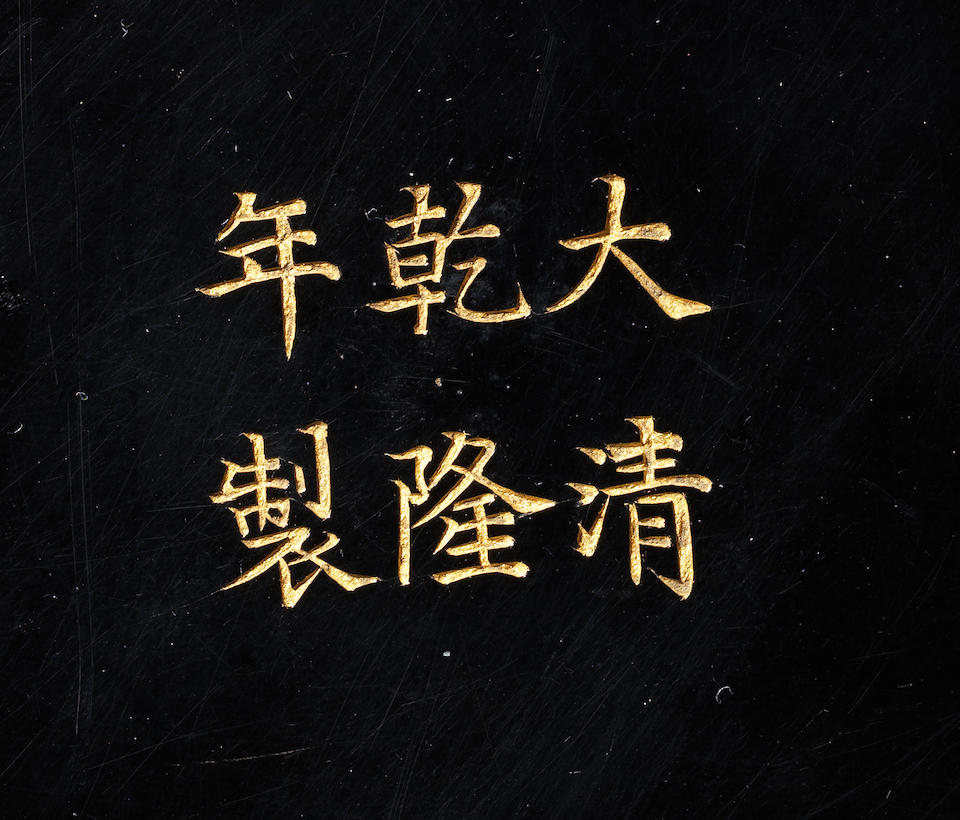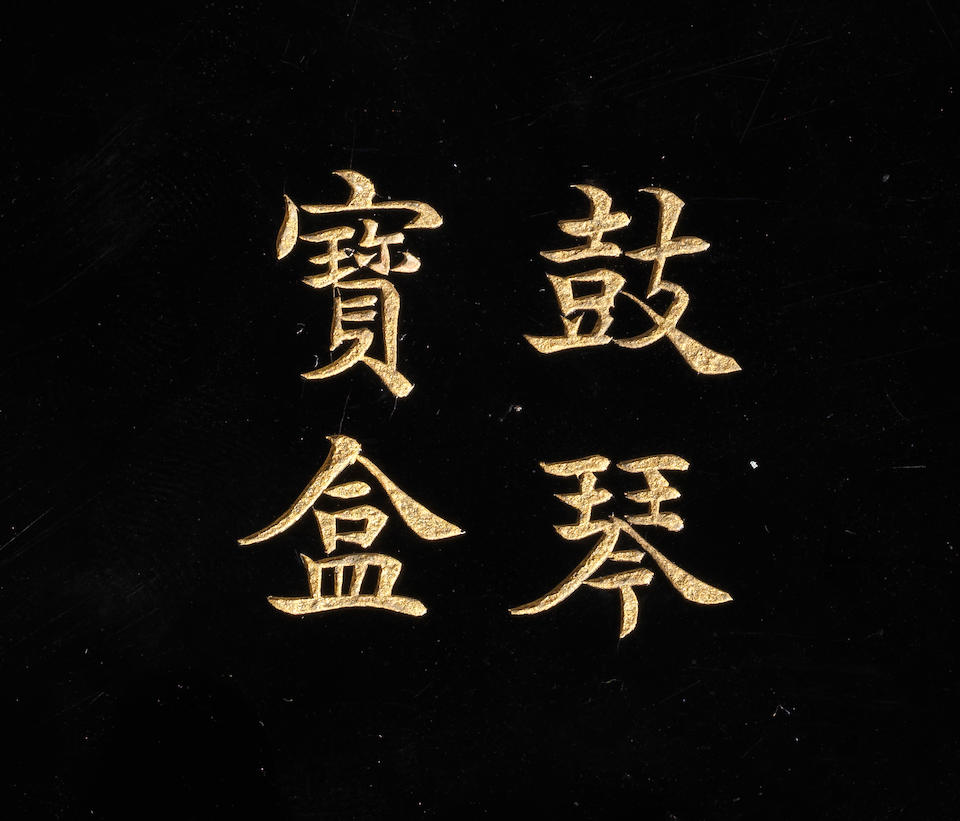A fine and rare Imperial lacquer 'qin' circular box and cover, Qianlong incised and gilt six-character mark and of the period


Lot 339. A fine and rare Imperial lacquer 'qin' circular box and cover, Qianlong incised and gilt six-character mark and of the period (1736-1795);17.5cm diam. Estimate HK$ 900,000 - 1.5 million (€86,000 - 140,000). Unsold. Photo courtesy Bonhams.
Thickly lacquered and deeply carved in relief, the central circular cartouche bordered by keyfret scrolls, featuring a scholar and his young attendant amidst landscapes, the scholar seated with legs crossed leisurely playing qin on his lap with an incense burner releasing fragrance at the side, the boy attendant preparing tea within the cabin of the sampan, a woodcutter resting on the cliff listening to the melodic tune, all set in a watery landscape with lush growths of pine trees, reeds and shrubs amongst rocky mountains, the sides further carved with hexagonal diaper ground leaving the interior and base lacquered black, the interior of the cover with a four-character kaishuinscription; the interior of the box with a six-character Imperial kaishu mark (2).
Note: The imagery depicting a woodcutter admiring the scholar playing qin is a reference to the tale of Yu Boya and Zhong Ziyi. Yu Boya was a historical figure from the state of Chu during the Warring States era. He was famed for being the advisor to the state of Jin and is widely known for his skill with the musical instrument qin. For many years, Yu searched for a soul who would comprehend his musical tune, but he could never find a companion who shared his vision. One day, whilst leisurely playing qin on a raft during his journey back from the state of Chu, he met a woodcutter by the name of Zhong Ziyi whilst passing by the shores of the Hanyang River. Zhong immediately understood the passion within the musical tune and Yu was overjoyed. Not long however, Zhong passed away and the news left Yu heartbroken. Yu broke his beloved qin, vowing never to play the musical instrument ever again.
Although there are many examples of lacquer boxes and covers in various sizes with both Imperial marks and accompanying four-character marks, most of the published examples are from the Qing Court collection in the Palace Museum, Beijing, or in the National Palace Museum, Taipei. The only other published example of a circular lacquer box and cover with accompanying Imperial mark and four-character mark with the same subject of qin in the National Palace Museum, Taipei, see Carving the Subtle Radiance of Colours. Treasured Lacquerware in the National Palace Museum, Taipei, 2007, p.127, no.120. (fig.1) Compare another two circular boxes and covers also with accompanying Imperial marks and four-character marks in the National Palace Museum, Taipei, where the diaper ground decoration at the sides is identical to the current lot, see Carving the Subtle Radiance of Colours. Treasured Lacquerware in the National Palace Museum, Taipei, 2007, p.125, no.116 & 117.
Bonhams. FINE CHINESE CERAMICS AND WORKS OF ART. Hong Kong. 24 Nov 2013 14:00 CST

/https%3A%2F%2Fprofilepics.canalblog.com%2Fprofilepics%2F1%2F0%2F100183.jpg)
/https%3A%2F%2Fstorage.canalblog.com%2F03%2F02%2F119589%2F96711876_o.jpg)
/https%3A%2F%2Fstorage.canalblog.com%2F11%2F31%2F119589%2F94773502_o.jpg)
/https%3A%2F%2Fstorage.canalblog.com%2F20%2F83%2F119589%2F94772815_o.jpg)
/https%3A%2F%2Fstorage.canalblog.com%2F26%2F72%2F119589%2F75604929_o.jpg)
/https%3A%2F%2Fstorage.canalblog.com%2F59%2F60%2F119589%2F26458628_o.jpg)



/image%2F1371349%2F20240411%2Fob_a3392b_2024-nyr-22642-0917-000-a-qingbai-foli.jpg)
/http%3A%2F%2Fstorage.canalblog.com%2F16%2F06%2F119589%2F129705144_o.jpg)
/http%3A%2F%2Fstorage.canalblog.com%2F86%2F19%2F119589%2F129426368_o.jpg)
/http%3A%2F%2Fstorage.canalblog.com%2F80%2F72%2F119589%2F129345826_o.jpg)